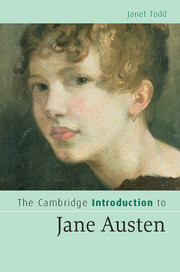2 - The literary context
Published online by Cambridge University Press: 05 June 2012
Summary
Where many aspiring writers begin by expressing their disgust with the adult world of parents or by picturing a compensatory fantasy life, Jane Austen started with mimicry and parody, writing burlesques and pastiches of grown-up fiction and reading them aloud to her family. In the last year of her life she wrote to a niece that she wished she had written less and read more when a child, but the habit of close stylistic scrutiny which parody requires stood her in excellent stead. It is a measure of her present power that almost single-handedly she has made most of her contemporaries seem excessive, artificial, or absurd.
I must keep to my own style
No one could intend to be a serious novelist in the late eighteenth century without being aware of the genre of fiction and without thinking of the great male forebears, Samuel Richardson and Henry Fielding. As their successor, Jane Austen was ambivalent about their achievements. Richardson was considered the major originator of women's fiction: his novels Pamela (1740) and Clarissa (1747–8) have central female characters and much of the interest of Sir Charles Grandison (1753–4) inheres in the women. All three novels are written in letters, so displaying not so much the inner consciousness of characters as their self-analyses, their sense of their own conscience, and their self-projection. The young women confront moral and social questions, and struggle to assert themselves in an alien world mainly through the act of writing.
- Type
- Chapter
- Information
- The Cambridge Introduction to Jane Austen , pp. 18 - 35Publisher: Cambridge University PressPrint publication year: 2006



